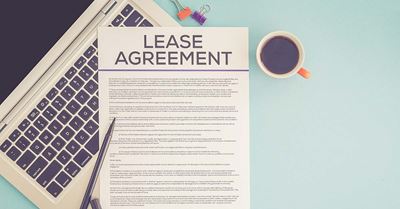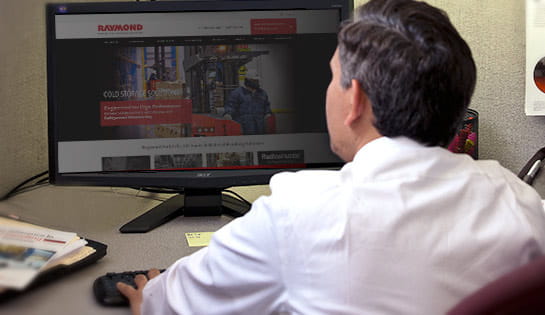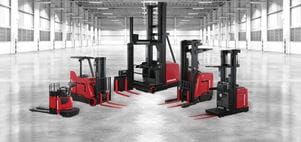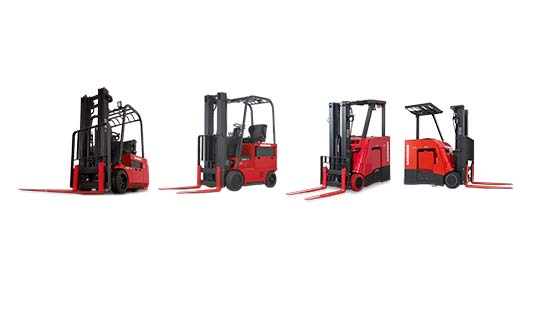2019 Accounting Rule Changes To Equipment Leasing Will Seriously Impact Your Balance Sheet

2019 changes to GAAP rules moved operating leases to the balance sheet. What does that mean for your lift truck operation? Plenty.
In 2016, the Financial Accounting Standards Board (FASB) introduced a new standard known as ASU 842 that will require businesses to show operating lease assets and liabilities on the balance sheet. For companies that lease much of their equipment under operating leases, this is significant change.
In fact, this is one of the largest accounting rule changes in the last 30 years. Worldwide, there is an estimated three trillion dollars in off balance sheet leases. That is all about to change.
Under the new rule, for any lease greater than one year, lessees will record a “right of use” asset and a corresponding lease liability on the balance sheet.
This new treatment of operating leases will go into effect on December 15, 2018 for public companies, and will also be required for private companies at the end of 2019.
While most public companies have been preparing for these changes for the past two years, many smaller organizations have not even started looking at their impending lease reporting obligations.

How Will This Affect My Business?
If you use a lot of operating leases for your material handling equipment, your balance sheet is going to look quite different. Moving operating leases to the balance sheet will inflate both assets and liabilities, meaning that you’ll need to educate executives, board members, partners, lenders, investors, and other stakeholders in your business.
You’ll also need to catalog and report on all organizational leases, even contracts that include embedded equipment leases. If you’re buying services that include use of equipment as part of the service, it must be identified as an embedded lease with corresponding balance sheet entries.
For large organizations, compiling and reporting on company-wide lease obligations can be a monumental project. Even smaller businesses are grappling with the complexity of lease reporting. In many cases, organizations will need to change their business processes to accommodate lease identification and reporting.
Once you’ve identified all leases, you’ll need to start modeling out how those leases will impact your balance sheet and other financial reporting. This means putting together an assessment of the capitalized amount of each lease, and how that will affect your P&L as those items amortize. By setting the right expectations early, you can avoid surprises and compliance issues.
FEATURED PRODUCT
Raymond Equipment Leasing
If you’re concerned about the upcoming accounting changes for operating leases, we can help you optimize your equipment lease programs and develop a leasing strategy that’s perfect for your business. Contact a Raymond leasing specialist today!

What Exactly Is A Lease?
Most of us are very familiar with the concept of leasing, but not many people can provide a concise definition of the financial treatment or legalities of a lease. Simply stated, a lease is a contract that conveys the right to control the use of an identified asset for a set period of time in exchange for consideration.
This definition is relatively straightforward when it comes to leasing real estate, vehicles, equipment and other assets that are routinely leased. However, from an accounting perspective, anything that meets the criteria of a lease will need be reported as a lease going forward.
Many contracts that are not explicit leases include embedded lease components. For example, a company that buys services from a telematics provider may be paying a monthly fee that includes vehicle monitoring and the equipment that is mounted to their trucks. The equipment portion of their contract is effectively a lease. Under the new rules, the lease and non-lease components of the telematics contract will need to be identified and reported.
Capital Leases vs Operating Leases
There are two basic ways a business can lease assets: capital leases (often called finance leases) and operating leases.
A capital lease effectively acts as debt to own an underlying asset after a specified length of time. This is a bit like the concept of a car loan: you are making payments for a set period of time, and after a series of payments you own the car outright when the loan is repaid.
The term of a capital lease is typically 75% or more of an asset’s useful life, and the present value of the lease payments equals or exceeds 90% of the total original cost of the equipment.
For most capital leases, the lessee is fully responsible for equipment maintenance and repair and takes on all the risks of ownership.
An operating lease, on the other hand, does not convey the underlying asset at the end of the lease term. The lessee is paying only for the right to use an asset for a set period.
In the consumer world, this would be like leasing a car from a dealership. You make monthly payments to use the car, but you don’t have any equity in the vehicle at the end of the lease term and must return it to the dealer.
To continue with the auto lease comparison, maintenance and repair are also handled by the lessor during the term of an operating lease. The lessee uses the asset without the risks of ownership.
With both capital and operating leases, the lessee must recognize a right-of-use asset and a liability for the lease payments on the balance sheet. For each lease payment, the lease liability decreases.
However, the expenses recognized are different depending on whether the lease is an operating or capital lease. With a capital lease, the lessee will separately recognize interest expense and amortization expense each period. The sum of these two items will be higher in the beginning years of the lease and lower in the later years of the lease.
For operating leases, the lessee simply recognizes a “lease expense” for the amount of the lease payment each period. The lease expense is exactly the same each period, and it factors both interest accrued on the lease liability and amortization.

The Bottom Line
It is no longer possible to keep leasing liabilities off of a balance sheet. For equipment-intensive businesses like material handling, this accounting change will have far reaching effects, and businesses should be prepared for these changes in 2019.

